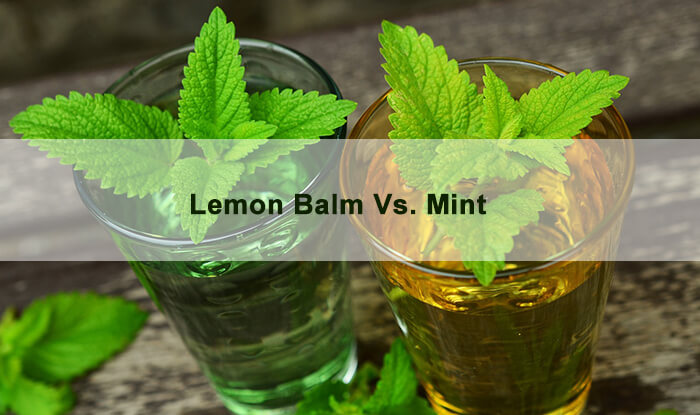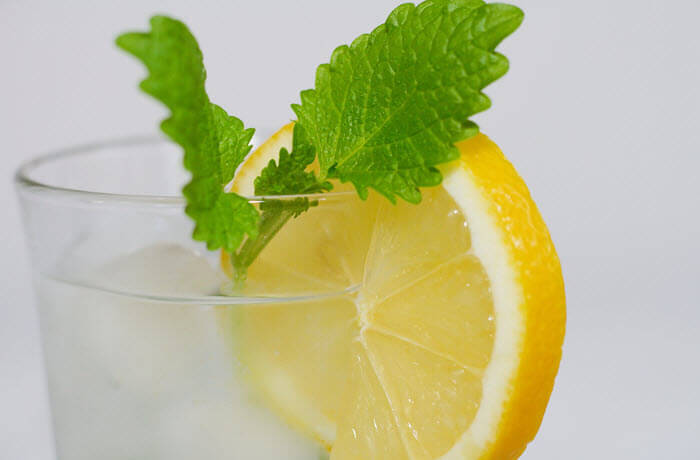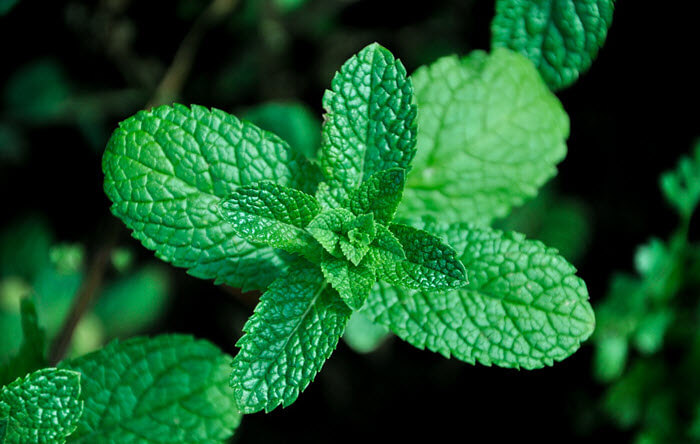“Lemon balm causes the mind and heart to become merry”!
We cannot agree more with those words of Nicolas Culpepper.
This article discusses the “battle of the spices” between Mint and Lemon balm. We note their differences, similarities, and uses.
Table Of Contents
Summary
10-second Summary
Lemon balm and Mint have similar origins. They are both from the mint family. Yet, lemon balm has a lemony taste with mild mint undertones, while Mint is sweet with a menthol feel.
They both have health benefits, and you can substitute them for each other in dishes and drinks. It depends on the taste and flavor you want to achieve.
30-second Summary
- Lemon Balm and Mint are from the same mint family. But lemon balm is of the Melissa spp., while Mint is Monarda spp.
- There is only one lemon balm, but Mint has over 40 varieties. The most common being spearmint.
- They differ in appearance, use, health benefits, taste, and aroma.
- Lemon Balm has soothing and calm properties, while Mint is a great way to remove bad breath.
- You can substitute lemon balm and mint in dishes and drinks. Ensure the spice switch aligns with your goal in the end.
Differences between Lemon Balm and Mint
1. Origin
Is lemon balm a mint? The simple answer is, yes, it is.
Both Lemon balm [1] and Mint originate from the same plant family, Lamiaceae.
Mint is an annual herbaceous plant that belongs to a genus (Monarda spp.). This genus also contains the spices basil and oregano.
Lemon balm (Melissa officinalis) is a perennial herbaceous plant that belongs to the genus (Melissa spp.).
2. Location
As a native herb, you can find lemon balm in Iran and the Mediterranean Basin. They are present in North Africa, Central Asia, and south-central Europe.
But, Mint is widespread in mainland Europe, Africa, Australia, and North America.
3. Type
Lemon balm is the only one in the genus; hence it is the least versatile.
In contrast, Mint has over 40 varieties available; the most common is spearmint [2]. The mint flavors range from light to heavy flavors.
4. Physical Appearance
So, how to identify lemon balm or mint?
Most lemon balm plants can grow to a height and width of about 2 feet. Their foliage is usually bright green when exposed to loads of sunlight.
Lemon Balm
With mint plants, their height ranges from 6 inches to 3 feet with a width of 3 feet. Mint leaves are dark green with smooth matte surfaces.
Mint
5. Taste and Aroma
If you love citrus fruits, you can imagine a “lemony” flavor with a mild hint of mint. That’s the taste of lemon balm.
Mint tastes sweet and cold, giving a chilly sensation due to the presence of menthol in the herb.
About aroma, the leaves of lemon balm have a bubbly lemony and piquant scent. This scent infuses warmth into your dish.
In comparison, the array of mint species gives off a variety of aromas. They could be fruity pineapple to chocolatey or plain minty and fresh.
6. Health Benefits
The National Library of Medicine certifies that lemon balm can reduce anxiety and stress [3]. It uplifts your mood by increasing calmness.
Other health benefits include help with insomnia, nausea, cold sores, and indigestion.
In contrast, fresh or dry mint leaves can help freshen bad breath. Mint leaves can help to treat IBS and enhance brain function.
Similarities between Lemon Balm and Mint
Despite the differences between both spices, they have similarities.
They both have similar garden characters.
Both plants are grown in well-drained soil with lots of rainwater supply.
Once mature, harvesting both plants is pretty straightforward. They both can thrive in the same weather conditions.
They are from the same family and share some form of resemblance.
As mentioned earlier, Mint and Lemon balm is from the same family. Also, their leaves both have oval shapes.
Uses of Lemon Balm and Mint in the Kitchen
Every spice brings its unique taste and flavor to your dish. Yet, lemon balm and mint can substitute for each other.
Your cocktail recipe might need a lemon balm, but it would still turn out nice if you switched it with mint. Mojito recipes can call for mint leaves, but you can swap mint for lemon balm.
You can use lemon balm in your meat-flavored dishes and still achieve a delightful flavor.
Note that the difference between mint and lemon flavors is significant. So make sure to use the right flavor that matches the goal of your recipe.
You can infuse both lemon balm and Mint in foods like:
- Fruit salads
- Green salads
- Poultry dishes
- Seafood dishes
- Vegetable dishes
- Pastries
- Teas
- Drinks and even ice cream
They taste exquisite with lemon balm or Mint as their ingredients.
Frequently Asked Questions
Can I substitute lemon balm for Mint?
If you want to switch the flavor of your meal, you can substitute both spices for each other.
So if you desire your food recipe to taste zesty, your best choice is lemon balm. If you want a bit of menthol and a cool sensation on your tongue, then use Mint.
Apart from health and nutritional benefits, can I use lemon balm for something else?
Yes, you can! Lemon balm acts as a mosquito and gnat repellent.
Gardeners also love the lemon balm plant because it gives the garden a scented fragrance. Also, it’s quite a bee attractor.
Besides Mint, is there another herb that looks like lemon balm?
Herbs like Thai basil and Catnip look like lemon balm. This resemblance might be due to a similar origin.
Catnip has a similar taste to Mint, but it’s weaker than Mint. Additionally, it gives a woody, grass-like taste when added to tea.
Is lemon balm in the mint family?
Yes, lemon balm belongs to the mint family. It is a perennial (not annual) herb that can be used fresh in many culinary applications including frostings and cakes.
Lemon balm has a soothing, calming effect which makes it wonderful for anxiety and stress.
Final Words
So, do you have all you need to differentiate between Lemon balm and Mint?
The bottom line, if you want sweet, intense flavors with menthol undertones, use Mint.
If you want a zesty, citrus taste with a tint of mint, use lemon balm.
With spices, the keywords are preference and intent. Decide what best suits your dish and “roll” with it. Do not be afraid to experiment!




